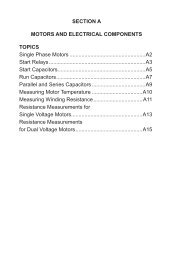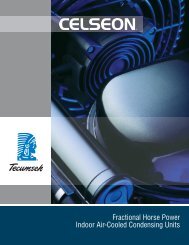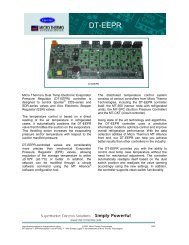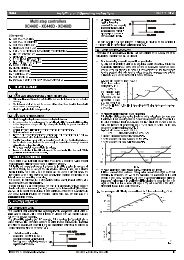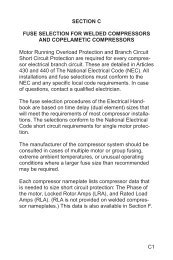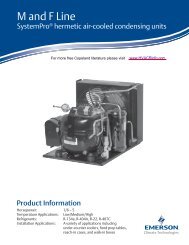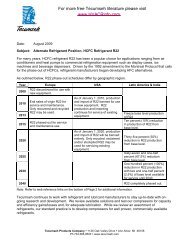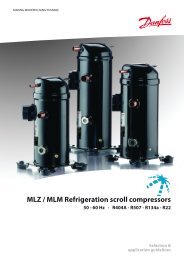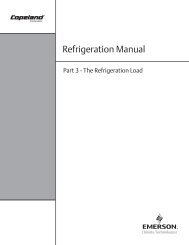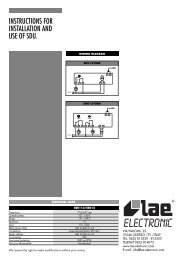Hermetic Compressor - Tecumseh
Hermetic Compressor - Tecumseh
Hermetic Compressor - Tecumseh
Create successful ePaper yourself
Turn your PDF publications into a flip-book with our unique Google optimized e-Paper software.
7<br />
WARNING! To avoid electric shock, electrocution and terminal venting with ignition,<br />
do not energize a compressor that has a ground fault. Mark and red tag the<br />
compressor to indicate that there is a ground fault. Do not reconnect the power<br />
leads. Tape and insulate each power lead separately. Proceed to Step 2. Do not<br />
replace the compressor or energize the system before performing Step 2.<br />
Step 2: Check for Water in the System<br />
Once the compressor is cool to the touch, open the system process valve slightly to see if<br />
any water comes out of the system. WARNING! Opening the system process valve while<br />
the compressor is hot can cause severe burns from steam coming out of the valve.<br />
If ANY water comes out of the process valve, the entire system must be replaced. See<br />
"replacing a Single-wall Water-utilizing System” below.<br />
If water does not come out of the process valve, there is still a possibility that some water<br />
has leaked into the refrigerant side of the system. To address this possibility, determine if<br />
the system has a history of losing refrigerant charge without a leak being found or repaired.<br />
If you find ANY indication of a history of losing refrigerant charge without detection of a<br />
leak, this is a sign that refrigerant has leaked in the water inside the heat exchanger. The<br />
entire system must be replaced. See “Replacing a Single-wall Water-utilizing System” on<br />
page 33.<br />
If you do not find any indication of a history of loss of charge without detection of a leak,<br />
you still need to install:<br />
»a » high-pressure cut-out which interrupts power to ALL leads to the compressor, or<br />
»an » external pressure relief valve.<br />
Also, if you found a ground fault in the compressor in Step 1, replace the compressor before<br />
applying power to the system.<br />
Start Capacitor Overheating<br />
An overheated start capacitor can burst and spray or splatter hot material that can cause burns.<br />
Applying voltage to a start capacitor for more than a few seconds can cause the capacitor to<br />
overheat.<br />
Check capacitors with a capacitance meter, and never check a capacitor with the power on.<br />
System Evacuation<br />
Never use a compressor to evacuate a system. Instead, use a high-vacuum pump specifically<br />
designed for that purpose.<br />
Never start the compressor while it is under deep vacuum. Always break a vacuum with a minimum<br />
2 psig refrigerant charge before energizing the compressor.<br />
The compressor is cooled primarily by the flow of refrigerant. Running a system that is low on<br />
charge will reduce the life of the comperssor.<br />
Failure to follow these instructions can damage the hermetic terminal. As always, to avoid serious<br />
injury or death from terminal venting with ignition, never energize the compressor unless the<br />
protective terminal cover is securely fastened.



